Tools and materials for cleaning ceramic tiles
Instruments
To make cleaning easier, use suitable tools. First of all, for cleaning ceramic tiles, you will need:
- Bucket;
- Soft brush;
- Soft napkin;
- Vacuum cleaner.

Attention! Do not use a brush with hard (iron) bristles when cleaning.
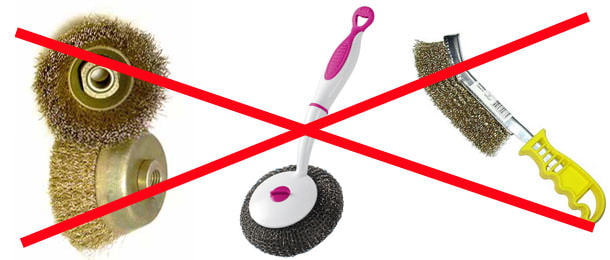
Materials
- Detergent;
- Water;
- Water-repellent impregnation for joints.
Pay attention to the choice of detergent for cleaning ceramic tiles. For its care, those that contain acids (for example, with the addition of chlorine), as well as those containing particles of abrasive, are not suitable - some types of tiles are scratched quite easily, and this leads to the fact that dirt begins to penetrate the ceramics pores, from where it is practically impossible to remove . In addition, a cosmetic soap containing fats and fatty acids can also stain the tile rather than wash it.
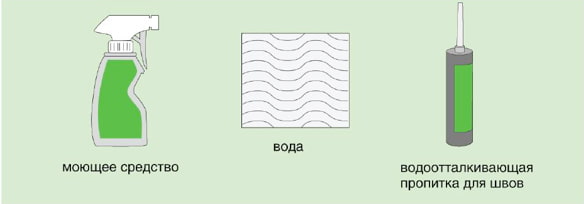
Tip: It is best to treat the tiles with warm water, to which a little ammonia or a glass cleaner has been added - after such a cleaning, the ceramic tile will shine like new.
The procedure for the care of ceramic tiles
Caring for ceramic tiles involves two stages: in the first, the dry method removes large contaminants and dust particles, in the second they wash the surface clean.
1
Dry clean. Before you start washing the surface, you need to vacuum it, or rinse thoroughly with a soft dry brush, and then collect the swept waste. This is especially important if the tile is a floor covering.

2
Wet cleaning. After applying a mild detergent to the napkin, wipe the surface of the tiles with light circular motions, then rinse it off with warm water and ammonia. If stains have formed on the surface, leave a washing solution on them for a while, then wipe with a soft sponge.
Tile Care Tip: Fatty contaminants are easily removed with soda solution, blood stains - with hydrogen peroxide. If the tile is stained with felt-tip pens, which often happens when there are children in the family, try to remove the children's “art” with a solution of ordinary bleach.
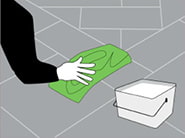
3
Finish. At this stage, you can apply a protective coating to the tile and treat the seams with special compounds to protect against water and prevent mold and fungus growth.
Protective measures against pollution
To facilitate the care of the tiles, you can use measures to protect the tiles from pollution. They can be divided into mechanical and chemical.
- Mechanical. To resort to cleaning ceramic tiles less often, place a grate near the front door, and behind it - a carpet with a hard pile. This simple measure will help facilitate care, trap street dust and sand at the entrance to the apartment.
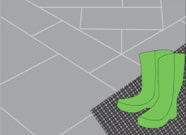
- Chemical. The surface of ceramic tiles can be coated with a special composition that reduces its adhesive ability - dirt will become less “sticking”, cleaning will be less common.In addition, tile joints must be treated with a special compound with water-repellent properties - this must be done at least two to three times a year.

Useful Ceramic Tile Care Tips
- Polish the surface from time to time. To do this, dilute the chalk powder in water to the density of sour cream, and apply to the ceramic tile. Allow to dry slightly, then rub with a dry rag. After this care, the tile will shine like new.
- To add shine to tiled surfaces, add ammonia (a couple of tablespoons per liter of water) to the wash water. After cleaning, remove the remaining drops of water with a soft cloth or suede.
- Very dirty tiles can be washed with water with the addition of table vinegar (three tablespoons per liter of water). To reduce greasy stains, you can use vinegar essence, but immediately after the disappearance of pollution, tiles should be washed with plenty of warm water.

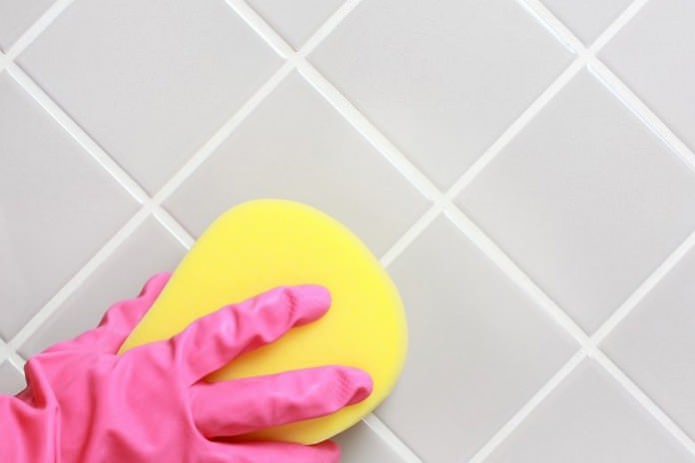

 Top 10 Trends in Interior Design 2020
Top 10 Trends in Interior Design 2020 Rating of cheap TVs with Smart-TV
Rating of cheap TVs with Smart-TV New Year's LED garlands on AliExpress - we disassemble while it's hot, so that the house is bright
New Year's LED garlands on AliExpress - we disassemble while it's hot, so that the house is bright Wall mural with flowers in the interior: living wall decor in your apartment
Wall mural with flowers in the interior: living wall decor in your apartment Gray sofa in the interior: views, photos, design, combination with wallpaper, curtains, decor
Gray sofa in the interior: views, photos, design, combination with wallpaper, curtains, decor Interior in peach tones: meaning, combination, choice of finishes, furniture, curtains and decor
Interior in peach tones: meaning, combination, choice of finishes, furniture, curtains and decor